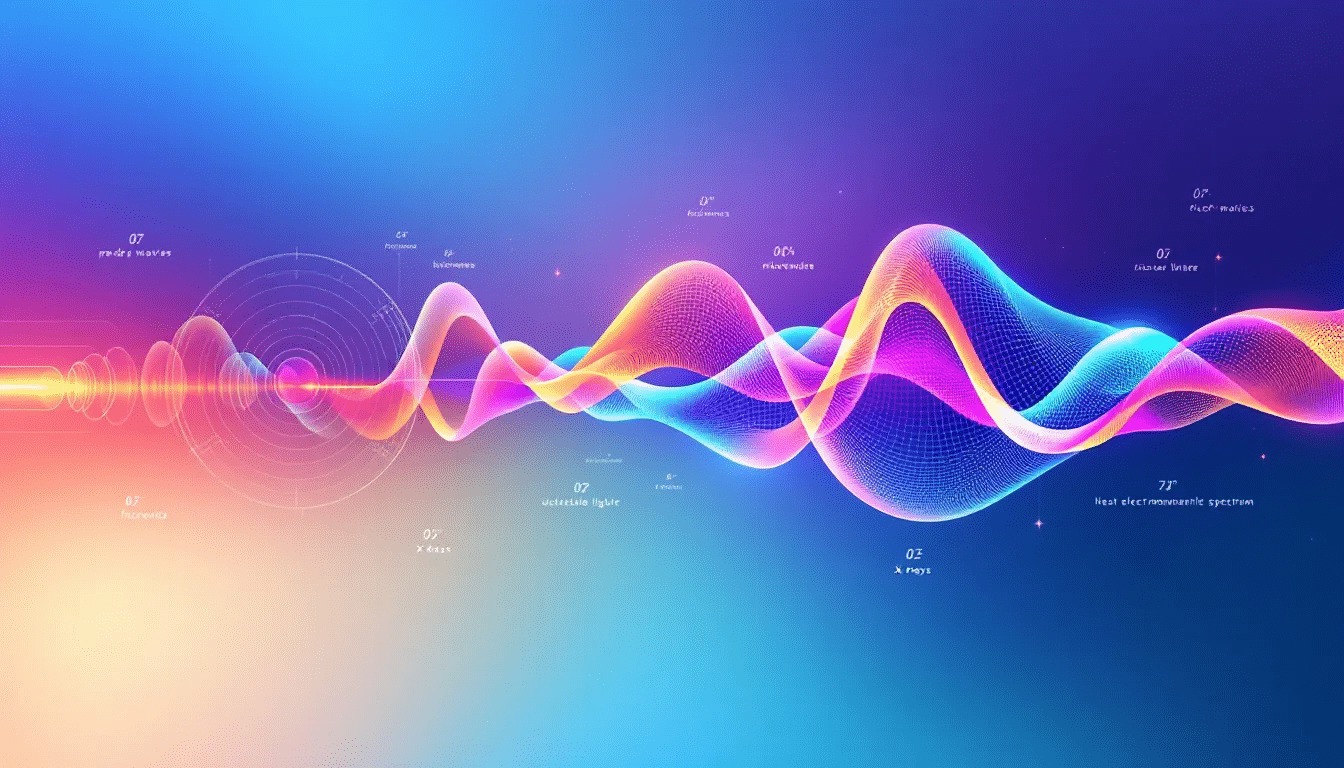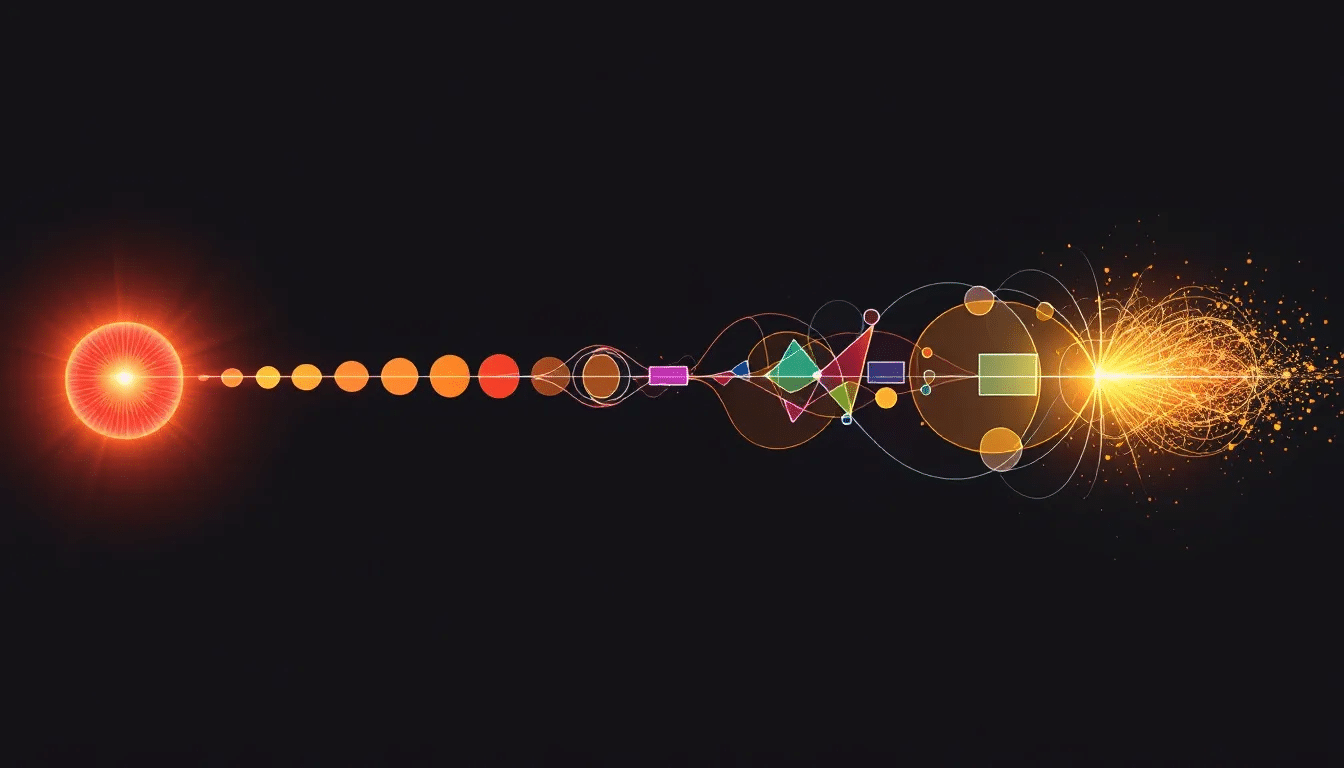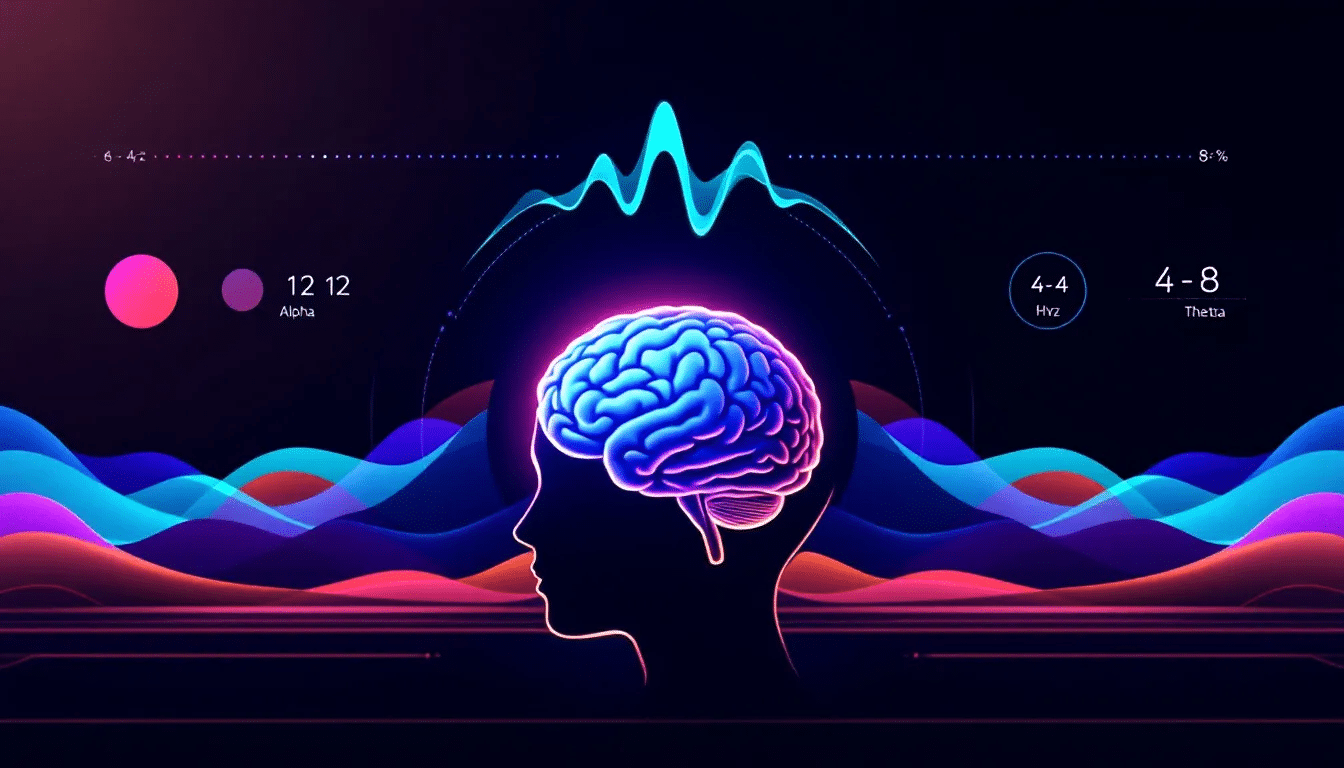Frequency measures how often something happens over a set period. In physics, it defines how many cycles a wave completes per second, be it sound, light, or electromagnetic waves. Grasping the science of frequency is crucial, as it underpins technologies from Wi-Fi to medical imaging. Dive in to uncover how this fundamental concept shapes our world.
What is Frequency?

The concept of frequency is crucial in the study of physics, characterized by how many times a complete wave oscillation occurs within a given timeframe. It’s represented mathematically as f = 1/T, with ‘T’ denoting the period necessary for one full cycle to transpire. Named in honor of Heinrich Hertz, a German physicist, hertz (Hz) is employed as the standard measurement unit and signifies one oscillation per second. In scenarios involving rotational motion, frequencies are often gauged in revolutions per minute (rpm), where 60 rpm translates to an equivalent of 1 Hz. Depending on their application or context, these measurements may be reported using different units.
In various sectors, understanding frequency is essential. Take sound waves as an example: they have their cycles per second quantified in Hertz. Complex analytical methods like Fast Fourier Transform (FFT) break down intricate signals into simpler elemental forms which prove instrumental for tasks ranging from music production and acoustics to managing unwanted noise.
Numerous modern-day technologies rely heavily upon accurate manipulation of frequency parameters – this includes applications such as wireless communications devices that connect smartphones online and medical imaging equipment used by healthcare professionals aiming to produce visual representations of bodily organs among others – underscoring just how pervasive frequency’s impact truly is across technological spectrums.
Frequency in Electromagnetic Waves

Electromagnetic waves differ from sound waves as they can travel through the vacuum of space without needing a medium. The place each wave occupies within the electromagnetic spectrum is established by its frequency, which extends from low-frequency radio waves to high-frequency gamma rays. This spectrum encompasses an extensive range of electromagnetic wave frequencies and wavelengths, with each segment possessing distinctive characteristics and practical uses.
Radio waves operate at lower frequencies and are indispensable for wireless signal transmission in various communication technologies. Conversely, gamma rays fall into the category of higher frequencies. They hold considerable energy that enables them to penetrate most substances effectively. These contrasting examples demonstrate how electromagnetic waves serve multiple functions, such as broadcasting music via radio or employing gamma radiation for medical instrument sterilization.
For electromagnetic wave propagation—that is transmitting energy across space—the speed at which it travels depends on both its wavelength along with its frequency rather than any particular medium itself. By carefully selecting different portions of this wide range of frequencies, we use these attributes advantageously—for instance, enhancing communication efficiency while simultaneously reducing signal disruption due to interference—since it’s understood that each specific type governs unique interaction properties.
A section known widely among this broad spectrum involves visible light: a mere fraction yet crucial enough for us to embark upon our journey into understanding more about light’s properties and effects around us.
Visible Light Frequencies
The spectrum of visible light is a small segment of the broader electromagnetic spectrum, comprising frequencies that can be detected by the human eye and interpreted as color. Spanning from roughly 380 to 700 nanometers in wavelength, each specific length within this range correlates to a distinct hue. For example, we perceive shorter wavelengths as violet while we view longer ones as red.
Our perception of colors arises from this frequency range. It provides us with the ability to discern various shades across our visual experiences—from the rich blues witnessed in ocean depths to the striking reds seen during sunsets—highlighting how differences in frequency contribute to diverse natural phenomena that are part of our everyday life.
Beyond Visible Light
The realm of electromagnetic waves extends beyond what the human eye can perceive, encompassing a variety of frequencies and wavelengths that include infrared and ultraviolet radiation. Infrared light has longer wavelengths than visible light, while ultraviolet possesses shorter ones. Both serve important functions with infrared being utilized in devices like remote controls and thermal cameras, and ultraviolet being employed for tasks such as sterilization processes or identifying fake money.
These invisible waves exert significant effects on biological systems and physical materials despite remaining unseen by us. For instance, exposure to ultraviolet rays can lead to sunburns yet is also vital for the body’s production of vitamin D. Understanding these various types of waves allows us to harness their unique attributes across multiple areas, including technological innovation and healthcare advancements.
Frequency in Sound Waves

Sound travels through the air as it compresses and decompresses the surrounding medium, thereby causing fluctuations in pressure. These longitudinal waves are identified by their frequency—the metric that decides the perceived pitch of a sound. Waves with higher frequencies are heard as sounds with higher pitches, while those at lower frequencies give rise to deep bass tones.
In contrast to electromagnetic waves that do not need a material medium for transmission, sound waves rely on substances such as air or water to carry them. As such, they cannot travel through space since it is a vacuum where no medium exists for propagation.
Grasping how sound waves function and interact with various media underpins our scientific understanding of their use across multiple applications.
Low Frequencies vs. High Frequencies
Based on their frequency ranges, sound waves are categorized into various types: audible sound, infrasound, and ultrasound. Sounds with low frequencies often embody bass tones due to their extended wavelengths which allow them to cover more ground and move through obstacles efficiently. This quality renders them suitable for uses such as sonar technology and the detection of seismic activity.
On the flip side, sounds at high frequencies resonate with treble tones because they possess shorter wavelengths. These higher frequencies play a pivotal role in scenarios that demand precise and clear sound reproduction like those found in top-tier audio systems. Recognizing how low-frequency waves differ from high-frequency ones is essential for crafting and fine-tuning auditory equipment tailored to specific settings.
Measuring Sound Frequencies
Analyzing acoustic properties and comprehending the behavior of sound necessitates precise measurement of sound frequencies. Devices such as frequency analyzers and sound level meters are frequently employed to assess and dissect these waves, which is crucial for various applications including environmental noise analysis and music production.
The grasp of sound frequencies plays a pivotal role across numerous sectors, encompassing music, telecommunications, and environmental management. Precise frequency measurements are fundamental in achieving superior acoustics within concert venues, implementing efficient noise mitigation strategies in city development projects, and ensuring clear communication through telephonic systems. These assessments are imperative for both enhancing our listening experiences and effectively regulating sounds within different environments.
Wave Propagation and Speed
The medium through which a wave moves dictates the velocity of its propagation. While variables such as frequency and wavelength are subject to change, once established for a specific medium, the speed of the wave is consistent. The density and elasticity unique to each medium are essential in defining this constant speed. As an example, sound waves move more quickly in water than in air because water possesses a greater density.
Bass tones, representative of low-frequency sounds, usually have extended wavelengths that enable them to traverse longer distances compared to their high-frequency counterparts. Thanks to these properties, they can also better surmount physical barriers — an attribute instrumental for purposes like underwater sonar or seismic surveys.
Understanding both how waves propagate and their associated speeds is crucial when looking into enhancing their performance across various technological applications.
Angular Frequency and Period
The angular frequency reflects the rate at which a wave element undergoes angular displacement over time and is essential in assessing how the phase of a waveform changes. This measure, often denoted by, connects to the period through the equation = 2/T, where T symbolizes the duration needed for one complete oscillation.
This connection demonstrates that as frequency rises, so inversely proportional does its corresponding time interval decrease – meaning they maintain equality with each other. The term “frequency” is central when exploring this interdependence between both concepts.
In terms of sinusoidal waves specifically, one must consider that their defining feature lies in their repeating cycles. Here too we see evidence of importance: understanding angular frequency and temporal periods underlies much work within disciplines like signal processing and wave mechanics, where such principles are foundational for comprehending repetitive motions that characterize waves.
Practical Applications of Frequency

Maintaining control over frequency is essential for accuracy and dependability in many technological applications. Whether it’s ensuring exact timing within GPS systems or providing consistent frequencies crucial for wireless communications, the use of frequencies spans a wide array and plays a significant role.
Exploration into Solfeggio frequencies has contributed to recognizing music therapy as an official health profession, underscoring the significant influence that frequency can have on overall health and wellness.
Radio and Communication
Various radio transmissions are assigned specific frequencies within the electromagnetic spectrum to reduce interference and improve the quality of communications. For example, mobile phone services divide coverage areas into cells where each cell has a base station that handles signal transmission and reception with mobile devices. The advancement in mobile network technology, such as 5G networks using higher frequency bands including but not limited to 3.5 GHz and 26 GHz, has allowed for faster data transfer rates and reduced latency.
The efficient management of frequency allocations is crucial for enhancing communication systems. As we advance technologically, it becomes increasingly critical to effectively manage the electromagnetic spectrum to accommodate emerging technologies like 5G while ensuring continuous connectivity and optimal use of available frequencies. Such management is vital for sustaining reliable communication networks with high performance standards.
Medical Imaging
Frequency is vital in medical imaging techniques, affecting the quality and accuracy of images. MRI, for instance, relies on specific frequencies to generate detailed images of internal structures, while X-ray imaging uses high-frequency electromagnetic waves to capture images of bones and dense tissues. These applications highlight the importance of frequency control in medical diagnostics.
Maintaining frequency stability in medical imaging devices is essential for accuracy. Temperature-compensated crystal oscillators (TCXOs) are commonly used for this purpose, and protective measures against electromagnetic interference help prevent disruptions in frequency control.
These measures ensure the reliability and precision of medical imaging technologies, contributing to effective healthcare.
Meditation Music and Frequency

Solfeggio frequencies comprise particular sound tones known to support mental and physical well-being, which is why they are important in relaxation and meditation routines.
The meditation track “Bes” aligns perfectly with the concepts of frequency, providing a distinct listening experience aimed at nurturing peace and good health.
The Nature of “Bes”
The music of “Bes” is composed of smooth, velvety sounds coupled with gentle, undulating rhythms that create a serene ambiance. This composition has been crafted with calming elements to make it perfectly suited for activities such as meditation and relaxation.
In creating “Bes,” the focus was on incorporating mild rhythms that evoke feelings of tranquility and promote a state of peace and well-being.
Benefits of “Bes”
Bes, the guardian deity of sleep, assists individuals in both initiating sleep and maintaining a tranquil night’s rest. By calling upon Bes, one can improve their sleep experience by creating an atmosphere conducive to peaceful and rejuvenating rest.
In essence, the musical composition titled “Bes” draws on these concepts to deliver an auditory encounter that is soothing and healing for listeners. Here, you can find an in-depth explanation about “Bes” at https://orchestralmeditations.com/bes-sleep-meditation-personal/
Summary
The study of frequency covers an extensive range of occurrences, including the hues we perceive in visible light and the various pitches produced by sound waves. Recognizing the significance of frequency in both electromagnetic and acoustic waves broadens our understanding and appreciation for the complexities that surround us daily. Its impact is significant across multiple areas such as communication, medical imaging techniques, or even practices like meditation.
Our ongoing efforts to comprehend and utilize frequencies continue to demonstrate their boundless potential to innovate within technology sectors, enhance health outcomes, and contribute positively to overall human well-being. Investigating how frequency operates opens up new insights into our environment while simultaneously offering opportunities for improving individual lives along with collective societal benefits.
Frequently Asked Questions
What is the nature of the music piece “Bes”?
“Bes” features a distinctive mix of smooth, velvety sounds and gentle, lilting rhythms that come together to form a tranquil ambiance. This special combination ensures that listeners enjoy an absorbing and relaxing auditory journey.
What role does the protective god Bes play in relation to sleep?
The guardian deity Bes is known for safeguarding those who sleep, assisting them in both falling asleep and ensuring their slumber remains peaceful. His association with safety extends specifically to the realm of restful sleep.
What file formats are available for the music tracks?
The available file formats for the music tracks are compressed MP3 files and broadcast quality WAV files. This ensures you have options for both standard listening and high-quality audio needs.
What is the discount offered for referring a friend?
The discount offered for referring a friend is a 25% voucher code for the referred friend and a 25% discount code for the referrer upon the friend’s order placement.
What is the price of the Complete Best Bundle?
The Complete Best Bundle is currently available at a reduced price of $26, which represents a 52% discount from its initial value of $54.



